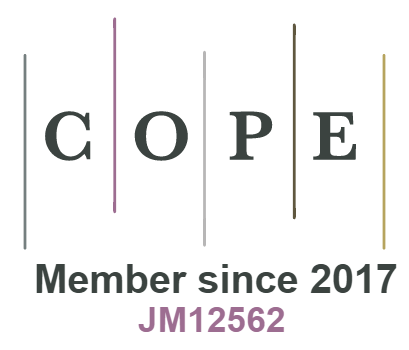A Systematic Review of the Continuous Professional Development for Technology Enhanced Learning Literature
DOI:
https://doi.org/10.18034/ei.v8i2.506Keywords:
Professional Development, Continuous Professional Development, Technology, PedagogyAbstract
There is a large body of international research on raising the quality of education, with particular emphasis on CPD to support professional and pedagogical growth. From an educator’s perspective, there is widespread agreement that effective CPD is an important component of educational success. Therefore, it is unsurprising that research interest in this area has grown, particularly in light of the digital agenda. In a TEL context, educators report one of the main barriers to effective use is the lack of training in this area. This review of literature will examine some of the key ideas that form successful TEL CPD delivery, more specifically with relation to transformative models of CPD. Likewise, the section attempts to understand the context in which educators are operating and make sense of the challenges that relate to continuing professional development (CPD). In order to fully explore this phenomenon, personal development (PD) frameworks are explored, with a specific focus on Aileen Kennedy’s (2005) 9 typologies.
Downloads
References
Armour, K. M. (Ed.). (2011). Sport pedagogy. London: Pearson.
Atencio, M., Jess, M., & Dewar, K. (2012). ‘It is a case of changing your thought processes, the way you actually teach’: Implementing a complex professional learning agenda in Scottish physical education. Physical Education & Sport Pedagogy, 17(2), 127-144. DOI: https://doi.org/10.1080/17408989.2011.565469
Baran, E., & Correia, A. P. (2014). A professional development framework for online teaching. TechTrends, 58(5), 95-101. DOI: https://doi.org/10.1007/s11528-014-0791-0
Beyer, L. (2002) The Politics of Standardization: teacher education in the USA, Journal of Education for Teaching, 28, pp. 239-245.
Boreham, N. (2000). Collective Professional Knowledge, Medical Education, 34, pp. 505-506.
Brooks, C., & Gibson, S. (2012). Professional Learning in a Digital Age. Canadian Journal of Learning and Technology, 38(2), n2. DOI: https://doi.org/10.21432/T2HS3Q
Campbell, C. (2015). Breaking boundaries In M Henderson and G Romeo (eds), Teaching and Digital Technology: big Issues and Critical Questions. Cambridge, Cambridge Univesity Press pp104-114.
Chambers, F. C., Armour, K. M., & Makopoulou, K., (2012). Progression in PE teachers’ career-long professional learning: Conceptual and practical concerns. European Physical Education Review, 18, 62–77 DOI: https://doi.org/10.1177/1356336X11430651
Cheon, J., Lee, S., Crooks, S.M., and Song, J., (2012). An investigation of mobile learning readiness in higher education based on the theory of planned behaviour. Computers and Education, 59 (2), 1054-1064. DOI: https://doi.org/10.1016/j.compedu.2012.04.015
Claxton, G., & Lucas, B. (2009). School as a foundation for lifelong learning: The implications of a lifelong learning perspective for the re-imagining of school-age education. Leicester: NIACE.
Conservative Party. (2017). Forward Together: Our Plan for a Stronger Britain and a Prosperous Future: the Conservative and Unionist Party Manifesto 2017. Conservative Party.
Dadds, M. (2014). Continuing professional development: Nurturing the expert within. Professional Development in Education, 40, 9–16. DOI: https://doi.org/10.1080/19415257.2013.871107
Darling-Hammond, L. (2006). Powerful teacher education: Lessons from exemplary programs. San
Darling-Hammond, L., Wei, R., Andree, A., Richardson, N., & Orphanos, S. (2009). Professional learning in the learning profession: Astatus report on teacher development in the United States and Abroad. Dallas, TX: National Staff Development Council.
Day, C. (1999). Developing Teachers: the challenges of lifelong learning. London: Falmer Press.
Department for Education. (2017). Teachers’ standards. Gov.uk. https://www.gov.uk/government/publications/teachers-standards
Desimone, L. M. (2011). A primer on effective professional development. Phi Delta Kappan, 92(6), 68–71. DOI: https://doi.org/10.1177/003172171109200616
Drago-Severson, E., (2012). New opportunities for principal leadership: shaping school climates for enhanced teacher development. Teachers College Record, 114 (3), 1-44.
Eraut, M., (1994). Developing professional knowledge and competence. London, Falmer Press.
Ertmer, P. A. (2005). Teacher pedagogical beliefs: The final frontier in our quest for technology integration?. ETR&D 53, 25–39 DOI: https://doi.org/10.1007/BF02504683
Fox, K. (2013). Twitter in the Classroom. Centre for Learning and Teaching, 13(1) pp.1-3.
Gao, Q., Yan, Z., Wei, C., Liang, Y., & Lei, M. (2017). Three different roles, five different aspects: Differences and similarities in viewing school mobile phone policies among teachers, parents, and students. Computers and Education, 106(3) pp. 13-25. DOI: https://doi.org/10.1016/j.compedu.2016.11.007
Henderson, D. (2002) Rift over Path to Chartered Teacher Status, Times Educational Supplement Scotland, 15 March.
Hill, H. C., Beisiegel, M., & Jacob, R. (2013). Professional development research consensus, crossroads, and challenges. Educational Researcher, 42(9), 476–487. DOI: https://doi.org/10.3102/0013189X13512674
Ingleby, E. (2016). We don't just do what we're told to do! Exploring pedagogical technology development needs. International journal of early year’s education, 24(1), 36-48. DOI: https://doi.org/10.1080/09669760.2015.1099038
Ingleby, E., Wilford, B., & Hedges, C. (2019). Teaching with technology and higher education: A brave new world? Practice: Contemporary Issues in Practitioner Education, 1(1), 1 DOI: https://doi.org/10.1080/25783858.2019.1589985
Junco, R., Elavsky, C. M. & Heiberger, G. (2012). Putting Twitter to the test: assessing outcomes for student collaboration, engagement and success. British Journal of Educational Technology, 44, 273-287.
Keengwe, J., Onchwari, G., Onchwari, J. (2009). Technology and Student Learning: Toward a Learner-Centered Teaching Model. AACE Journal, 17(1), 11-22.
Kennedy, A. (2005). Models of continuing professional development: A framework for analysis. Journal of in-service education, 31(2), 235-250. DOI: https://doi.org/10.1080/13674580500200277
Kennedy, A. (2014). Understanding continuing professional development: the need for theory to impact on policy and practice. Professional development in education, 40(5), 688-697. DOI: https://doi.org/10.1080/19415257.2014.955122
Kirk, G., Beveridge, W. & Smith, I. (2003). Policy and Practice in Education: the chartered teacher. Edinburgh: Dunedin Academic Press.
Koehler, M. J., & Mishra, P. (2008). Introducing TPCK. Handbook of technological pedagogical content knowledge (TPCK) for educators, 1(1), 3-29.
Landson, M., Straker, K., & Igbo, I. (2015). Adapting a Social Media Strategy in the Classroom: PEET. The Journal of Nursing Education 54(10), pp. 600. DOI: https://doi.org/10.3928/01484834-20150916-11
Little, J. W. (1994). Teachers’ Professional Development in a Climate of Educational Reform, Systemic Reform: perspectives on personalizing education.
Margolis, J., Durbin, R., and During, A., (2017). The missing link in teacher professional development: student presence. Professional Development in Education, 43 (1), 23-35. DOI: https://doi.org/10.1080/19415257.2016.1146995
McFarlane, K., and Cartmel, J. (2012). “Circles of Change Revisited: Building Leadership, Scholarship and Professional Identity in the Children’s Services Sector.” Professional Development in Education 38 (5): 845–861. DOI: https://doi.org/10.1080/19415257.2012.680603
Mishra, P., and Koehler, M. J., (2006). Technological pedagogical content knowledge: A framework for teacher knowledge. Teachers College Record, 108 (6), 1017-1054. DOI: https://doi.org/10.1111/j.1467-9620.2006.00684.x
OECD. (2005). First Results of the Adult Literacy and Life Skills Survey.
OFSTED (2006). The logical chain: Continuing professional development in effective schools. London: Department for Education and Skills, R
O'Sullivan, M. (2007). Creating and sustaining communities of practice among physical education professionals. Journal of Physical Education New Zealand, 40(1), 10–13.
Polly, D., & Brantley-Dias, L. (2009). TPACK: Where do we go now? Tech Trends, 53 (5) 36-47 DOI: https://doi.org/10.1007/s11528-009-0324-4
Prensky, M. (2001). “Digital Natives. Digital Immigrants Part 1.” On The Horizon 9 (5): 1–6. ISSN: 1074-8121.
Rhodes, C., and Beneicke, S., (2002). Coaching, mentoring and peer-networking: challenges for management of teachers’ professional development in schools. Journal of In-service Education, 28 (2), 297-309. DOI: https://doi.org/10.1080/13674580200200208
Rodriguez, G., & Knuth, R. (2000). Providing Professional Development for Effective Technology Use. North Central Regional Educational Laboratory Critical Issue. Retrieved from http://www.ncrel.org/sdrs/areas/issues/methods/technlgy/te1000.htm
Rogers-Dillon R. H. (2005). Hierarchical qualitative research teams: refining the methodology. Qualitative Research, 5(4), 437-454. DOI: https://doi.org/10.1177/1468794105056922
Sachs, J. (2003) The Activist Teaching Profession. Buckingham: Open University Press.
Selwyn, N. (2016). Education and technology: Key issues and debates. Bloomsbury Publishing.
Smyth, J. (1991). Teachers as Collaborative Learners. Buckingham: Open University Press.
Solomon, J. & Tresman, S. (1999) A Model for Continued Professional Development: knowledge, belief and action, Journal of In-service Education, 25, pp. 307-319.
Stevenson, M., Hedberg, J. G., O’Sullivan, K. A., & Howe, C. (2016). Leading learning: The role of school leaders in supporting continuous professional development. Professional Development in Education, 42(5), 818-835. DOI: https://doi.org/10.1080/19415257.2015.1114507
Tannehill, D., van der Mars, H., & Macphail, A. (2015). Building effective physical education programmes. Burlington, MA: Jones and Bartlett Learning.
Trowler, P., (2008). Cultures and change in Higher Education. Theories and practice. Basingstoke, Palgrave Macmillan. DOI: https://doi.org/10.1007/978-0-230-36511-7
Wang, Y. (2002). When technology meets beliefs: preservice teachers' perception of the teacher's role in the classroom with computers. Journal of Research on Technology in Teacher Education, 35,150e161. DOI: https://doi.org/10.1080/15391523.2002.10782376
Webster-Wright, A. (2009). Reframing professional development through understanding authentic professional learning. Review of Educational Research, 79 (2), 702-739. DOI: https://doi.org/10.3102/0034654308330970
Weiner, G. (2002). Professional Development, Teacher Education, Action research and Social Justice: a recent initiative in North Sweden, paper presented at the Annual Conference, In-service and Professional Development Association, Birmingham, 1-3 November 2002.
Weller, S. (2009). What does “peer” mean in teaching observation for the professional development of higher education lecturers? International Journal of Teaching and Learning in Higher education, 21 (1), 25-35.
Wenger, E. (1998). Communities of practice: Learning as a social system. Systems thinker, 9(5), 2-3.
Williams, R. T. (2018). Confidence Interventions: Do They Work?. Asian Journal of Humanity, Art and Literature, 5(2), 123-134. https://doi.org/10.18034/ajhal.v5i2.536 DOI: https://doi.org/10.18034/ajhal.v5i2.536
Williams, R. T., & Scott, C. D. (2019). The Current State of Outdoor Learning in a U.K Secondary Setting: Exploring the Benefits, Drawbacks and Recommendations. ABC Journal of Advanced Research, 8(2), 109-122. https://doi.org/10.18034/abcjar.v8i2.537 DOI: https://doi.org/10.18034/abcjar.v8i2.537
--0--
Downloads
Published
Issue
Section
License
Engineering International is an Open Access journal. Authors who publish with this journal agree to the following terms:
- Authors retain copyright and grant the journal the right of first publication with the work simultaneously licensed under a CC BY-NC 4.0 International License that allows others to share the work with an acknowledgment of the work's authorship and initial publication in this journal.
- Authors are able to enter into separate, additional contractual arrangements for the non-exclusive distribution of the journal's published version of their work (e.g., post it to an institutional repository or publish it in a book), with an acknowledgment of its initial publication in this journal. We require authors to inform us of any instances of re-publication.









